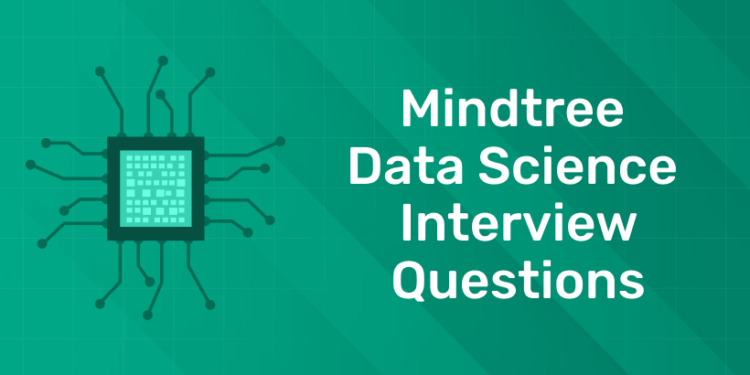Table of Contents
Mindtree is an Indian-based multinational company that provides IT consulting and technology solutions to a wide range of clients. The company employs nearly 40,000 people worldwide. Mindtree offers services in a variety of areas including cloud computing, data analytics, ERP, e-commerce, etc. It also offers R&D services in Video Surveillance, IT Infrastructure Management or MWatch, Integration Testing Methodology, and more.
Mindtree provides a powerful platform for its employees to learn and excel. But at the same time, getting a job at Mindtree is not an easy task. You need to be thorough with the Mindtree interview questions and learn them smartly to ace the interview. On that note, the content experts at MindMajix have prepared this blog with top 60 Mindtree interview questions and answers to help learners of different levels of expertise.
The questions and answers in this blog are divided into three sections. You can navigate directly to the appropriate section based on your level of expertise.
Enhance your data science skills with us! Join our free demo today!
Mindtree Interview Process
The Mindtree interview consists of three rounds: online assessment, technical interview, and HR interview. Let’s dive into each of the tips one by one.
Round: 1 – Online Assessment
In this round, you will be asked various questions from the following three sections to test your quantitative, written, and English writing skills.
Quantitative: The assessment will consist of questions to test your quantitative and analytical skills.
You will definitely need to be quick and accurate to perform this trick.
English Writing: The assessment will include questions to test your knowledge of English tenses, prepositions, antonyms, synonyms, etc. You will also be asked to write a few short paragraphs to test your writing skills.
Coding: The assessment will include questions to code at least two problems. The difficulty level of coding will be easy or medium, but complex coding will not be required. You will mainly be asked to code in C, Python, or C++. To pass this test, you must be familiar with programming.
Round: 2 – Technical Interview
Only after passing the online assessment will you be allowed to participate in the technical interview. During this event, your technical expertise will be tested in depth. You will be asked questions about your previous experience, projects you have worked on, and your achievements. To pass this test, you must have a solid grasp of the fundamentals of computer science, including data structures and algorithms, computer networks, operating systems, and more. Mainly, you must have expertise in programming languages like C, Python and C++. This round may have additional rounds depending on your performance in the first rounds.
Round: 3 – HR Interview
This is one of the important rounds in the Mindtree interview process. Even if you have done well in the technical rounds, you need to approach this round smartly. In this round, they will test your attitude, problem-solving skills and stress management in many ways. To complete this round successfully, you need to know the core values, leadership principles, culture, etc. of Mindtree. Also, you have to provide accurate answers to the questions based on the information provided in your resume. And there will be common questions related to your short-term and long-term goals, why Mindtree, your willingness to relocate, challenges, your leadership qualities, etc. So you must be well prepared before attending this HR round.
Mindtree Technical Interview Questions
Mindtree Python Interview Questions
1. What exactly are the packages and modules?
Modules are basically Python files that come with the .py extension. The files can contain classes as well as functions. A module can import other modules as objects. We use the import statement for this. When dealing with packages, it is a directory or folder. A package can contain subpackages and modules. Packages eliminate conflicts between module names. They support hierarchical structure of module namespaces using dot notation. Also, we can quickly create packages in Python.
2. Why do you use namespaces in Python and name their types?
Please note that Python maintains a namespace in the dictionary. We use namespaces to ensure that each object in a Python program has a unique name. Hence, this helps to eliminate naming conflicts between objects.
3. What do you mean by PYTHONPATH?
Basically, it is an environment variable used to add directories when importing packages or modules. The interpreter uses this variable to determine which modules to load. A Python program can access these modules and packages. PYTHONPATH can be used to ensure that imported files exist in the directory. Additionally, PYTHONPATH helps maintain libraries that we do not install in the common default location.
4. What is the role of dir() and help() functions in Python?
The help function displays documentation about functions, modules, etc. If we do not pass an argument to this function then the help utility will be launched in the console. The dir() function returns a list of valid attributes in addition to method objects. But it works differently for different objects. When dealing with module objects, it returns a list of attributes. Similarly, when dealing with class objects, it returns a list of valid attributes along with the base attributes. If we don’t pass any arguments, it returns the list of properties in the current scope.
5. What do you understand by iterator in Python?
An iterator is nothing but an object that remembers its state. With iterators, we can iterate over strings, lists, etc. We use the _iter_() method to initialize iterators.
6. Explain the types of Python literals.
A string literal is nothing more than a value or data assigned to a variable. There are many types of string literals, as shown below:
- String literals: The two types of string literals are single-line literals and multi-line literals. Single-line literals have a single line, while multi-line literals have multiple literals. Note that single-line strings are surrounded by single quotes. Double quotes surround strings that span multiple lines.
- Boolean Fixed Values: These fixed values contain either true or false.
- Numerical Digits: There are three numeric literals used in Python. These are integers, floats, and complex numbers. These literals are generally immutable.
- Special Literals: Python has only one special literal called “zero”. We use this literal to define a NULL variable. We also use this literal at the end of a list.
7. Description of Python Functions
This is a block of code that we can use in a program when required. A function contains a list of arguments, a valid name, and a body. The bottom line is that functions simplify modular programming. When it comes to Python, it provides many built-in functions. Additionally, it allows users to create their own functions. In Python, there are three types of functions.
8. State the difference between delete() and del functions.
We use the ‘remove()’ function to delete a particular data element from the list, irrespective of its position. On the other hand, we can use the ‘del’ statement to delete a data item at a particular position from the list. The index value is used to specify the position of the element in the del function.
Enhance your data science skills with us! Join our free demo today!
Mindtree SQL Interview Questions
9. Brief description of superkey, foreign key and candidate key.
- Superkey: We use an attribute or a key group to identify rows in a table. Typically, a superkey is a superset of a candidate key.
- Foreign key: It represents a column or a set of columns of a table stored in a database. The columns are usually linked to the primary key of another table.
- Candidate Key: Like super key, this is an attribute or group of attributes that we use to identify tuples in a table. Note that candidate key has the same strength as primary key.
10. Define data integrity.
This is the ability of data to remain consistent and accurate throughout its life cycle. This is one of the important aspects considered in software design along with its implementation.
11. Name the clauses used with the SELECT statement in SQL.
WHERE, GROUP BY, ORDER BY and HAVING are the clauses used with the SELECT statement.
- We use the WHERE clause to filter records based on certain conditions.
- The GROUP BY clause can be used to group records based on identical data. It is commonly used with aggregate functions and produces summary results.
- We will use the ORDER BY clause to sort the field records in ascending or descending order.
- We use the HAVING clause and the GROUP BY clause to filter records in a table.
It is important to note that the WHERE clause is completely different from the HAVING clause because we use the HAVING clause to filter aggregate records.
12. Briefly describe the relationships used in SQL.
- One-to-one: This is a relationship established between two tables. This means that a record from one table will be linked to a record from another table.
- Many-to-One: Same as before. Multiple records in a table are associated with a single record in the table.
- One-to-Many: This is a relationship between a single record in one table and multiple records in other tables.
13. List the uses of SQL.
SQL is a query language that performs various operations on a database. Here is how to use SQL. It performs queries on a database It inserts, deletes, and updates data in a database It retrieves data from a database It creates a new table or view in the database It creates a new database.
14. Explain pattern matching in SQL.
In pattern matching, wildcard characters are used instead of spelling the exact word. We can use LIKE operator with wildcards to get the required data. There are four ways to get the required data.
- Using % wildcard for simple search
- Using % wildcard twice
- Using NOT keyword
- Using _ wildcard for position-based pattern matching
15. Describe User-Defined Functions.
UDF or User Defined Function allows you to create functions using SQL expressions. User defined functions accept parameters, perform operations, and return a value. We can define UDFs in two ways: persistent and temporary. We can reuse persistent UDFs in multiple queries and use temporary UDFs in a single query. In addition, UDFs have many advantages, such as fast execution, modular programming, and reduced network traffic.
Two types of user-defined functions are shown below:
- Table functions – They return a table. A SELECT statement is used to return the table.
- Scalar functions – They return a scalar value. The value is usually specified in the RETURNS clause
16. Is 0 equivalent to NULL value?
NULL value is not equivalent to 0 or blank. Indeed, NULL is a value that is not available for performing arithmetic operations. We can consider NULL value as missing value or unknown value.
Enhance your data science skills with us! Join our free demo today!
Mindtree Java Interview Questions
17. What exactly is ClassLoader in Java?
ClassLoader is nothing but a subsystem of JVM. It loads the required interfaces and classes into JVM when required. There are a total of three built-in class loaders in Java as follows: Bootstrap class loader System class loader Extended class loader
18. What exactly is JVM?
JVM stands for Java Virtual Machine. It is a runtime engine that allows computers to run Java programs. It is obtained by converting Java code into bytecode. In other words, JVM loads, verifies, and executes the code. Additionally, JVM calls the main method in the Java program.
19.What do you mean by static variables in Java?
These are variables that are declared only within the class itself. No other instance can use the variable. In simple terms, only one copy of the variable is available in memory, regardless of how many instances of the class are created. The main advantage of using static variables is that it simplifies memory management. In simple terms, this makes Java program memory efficient.
20. Define state object in ReactJS.
Every component in ReactJS has a built-in state object. This object contains all the property values of the component. In a way, state objects control the behavior of ReactJS components. If there is a change in the property value of the state object, it will cause the component to re-render.
21. What is the role of prop hooks in ReactJS?
We use props to pass data from a higher hierarchy to a deeper component. Props can drill down until they reach the required level of hierarchy.
22. Briefly describe React hooks.
These are basically built-in functions. This allows state to be used with lifecycle methods in React components. As a result, we can improve code reusability and navigate the component tree flexibly. The main point of React hooks is that we can use all the features of hooks without writing class components.
In other words, we cannot use hooks in class components.
23.Why do we use custom hooks?
This is a JavaScript function. With custom hooks, we can override render props as well as higher-order components (HoC). This also reduces the amount of nesting required. Custom hooks help avoid multiple layers of abstraction.
24. How to avoid repeated rendering in ReactJS?
Repeated rendering of a component occurs when its properties are changed. Not only components, repeated rendering can also occur in child components. If we don’t update the rendered components, it will significantly affect the application performance. We can prevent the rendering using the ‘ShouldComponentUpdate()’ method.
Mindtree Automation Testing Interview Questions
25. List the types of automation testing.
We can list the types of automation testing in functional and non-functional testing.
- Functional Testing:
Unit Testing
Smoke Testing
Integration Testing
- Non-functional Testing:
Performance Testing
Keyword Testing
Regression Testing
Data Driven Testing
26. Identify the test environment.
Test environment means a computer or server. This is where the developers or testers test the software or a part of the software. Below are the necessary components of a testing environment.
- A computer or server with all the same configuration as the production environment.
- A test database similar to the production database
- An example of test data for testing software or a piece of code.
27. What do you mean by cross-browser testing?
It is essential to know that users can use any web browser to run web applications. So we need to test web applications on all browsers to check their compatibility and adaptability. We can ensure that users will get the same experience on any browser. So we can increase customer satisfaction and increase business productivity.
28. What do you mean by automated regression testing?
These tests are performed to check whether the newly added feature affects the performance of the software in any way. We can use different frameworks and tools to perform automated regression testing.
29. Mention the best practices that we should follow in automated testing.
Here are the best practices we should follow in automated testing.
- Be specific about what needs to be automated
- Completely remove uncertainty in test cases
- Execute only test cases based on skills and experience
- Maintain tests in a perfect database.
- Choose the Right Framework and Tools.
29. List down the essential qualities of a tool or framework that we use for automated testing.
- It should support the testing environment
- It should have good debugging capabilities
- It should be easy to use
- It should perform database testing
- The user interface should be user friendly
30. Briefly describe the risks involved in automated testing.
Here is a summary of some of the risks involved in automated testing.
- Steep learning curve: Learning the testing tools and frameworks effectively takes time. Testers must have good expertise to use the tools and get valid results.
- Unexpected results: Sometimes testing tools can produce unexpected results, which deviate from what is expected.
- Tool Selection: We need to carefully select our testing tools. This means we need to carefully check the compatibility and adaptability of the tools.
31. Describe Robot Framework.
It is a widely used open source automation framework for testing robotic process automation. Most of the libraries in this framework are also open source. Also, it is a platform independent tool built in Python.
32. Can you automate CAPTCHA testing?
We cannot automate CAPTCHA testing.
33. Is 100% automated testing possible?
100% automated testing is not possible. Background checks or the use of CAPTCHAs will fundamentally limit the effectiveness of automated testing. Nowadays, manual testing is best used.
34. What is Power BI used for?
With Power BI, we can:
- Connect to various data sources
- Transform and then model raw data
- Create reports, charts, and graphs
- Share data with others
- In short, we can transform raw business data into valuable visual data. Thus we can make informed decisions.
35. What is the importance of Power Pivot?
Power Pivot extends the analytical capabilities of MS Excel. Please note that it is one of the add-ins provided by Microsoft Excel 2010.
36. List the filters used in Power BI.
Below are the filters used in Power BI.
- Manual filters
- Cross drill down filters
- Include/Exclude filters
- Forward filters
- URL filters
37. Where is Power BI data stored?
Microsoft Azure is the cloud service associated with Power BI. Here are the locations where Power BI data is stored.
- Azure Blob Storage
- Azure SQL Database
38. How important are responsive segments in Power BI?
We can resize responsive segments to different sizes and shapes. When we change the responsive segment, the report data also adjusts. Note that responsive segments also work in mobile apps.
Mindtree Leadership Principles
1: Who was the first woman President of India?
Mindtree’s leadership model is built on three principles: leadership, learning agility, and self-awareness.
-
Leadership Skills
This principle has four parts: Coach, Thought Leader, Ninja, and Rainmaker.
- A Coach is a leader who inspires people, shares the vision, and creates more leaders.
- A Thought Leader is an innovative thinker and an expert in the Mindtree business.
- Ninja is a leader in ensuring quality production and taking company value to new heights through operational excellence.
- Rainmakers find new opportunities and create new segments that directly impact business operations.
-
Agile Learning
This principle is based on the leader’s ability to adapt to difficult situations. In other words, the leader must be able to respond and manage changing conditions well. Therefore, the leader must have qualities such as curiosity, interpersonal skills, the ability to manage ambiguity, and tact.
-
Self-awareness
This leadership principle refers to the leader’s ability to handle difficult situations and achieve success. In other words, the leader must be able to overcome weaknesses through his or her leadership skills.
Enhance your data science skills with us! Join our free demo today!
Free UPSKILLING Courses!
Take your first step toward mastering in-demand skills, acing interviews, and securing top-tier jobs with Entri's free upskilling courses.
Start Learning!Tips to Succeed in a Mindtree Interview
Tip #1: Research the Company
First and foremost, research Mindtree in every aspect of it. Know who Mindtree’s clients are and what services and consulting Mindtree provides to its clients. Understand the industries in which Mindtree operates many of its businesses. Learn about the company’s vision, leadership principles, and work culture. Make sure you have learned everything about Mindtree and left nothing out.
Tip #2: Good analytical skills
Mindtree will test your quantitative and analytical skills through an online assessment. Before going to the interview, go through a variety of quantitative tests, quizzes and aptitude questions. This will improve your analytical skills.
Tip #3: Good technical skills
In the technical section, the examiner will take an in-depth look at your technical skills in popular programming languages like C, Python and C++. So you need to have solid technical knowledge to answer difficult technical questions.
Tip #4: Review your attitude
There is no denying that attitude plays an important role in a person’s success. During the recruitment round, the employer will test your attitude in many ways. For example, how do you react to stressful situations, solve important problems, and evaluate your collaboration skills? Before going to the interview, check your attitude and accurately assess the positive and negative aspects. Get feedback from friends, mentors, and colleagues about your attitude. Then make a plan to improve accordingly.












